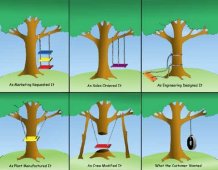This is where I get lost. Maybe I'm just dense and don't get it. I'm usually pretty good at following logic.
If the screws, one on each board, are removed, doesn't that make it a floating neutral inside the inverter even when in battery mode?
It would depend on the ground screw, some ground screws are for grounding the inverter case. It will operate, however it may not clear a ground fault of the case. The reason why is current always returns to the source, whether it is grid or the inverter.
Now, as far as removing a screw and having a floating neutral, it would depend again on the screw and where the relay bonds N-G when in inverter mode. The question becomes why you would want a floating neutral? Having a floating neutral from source will not allow a ground fault to to clear and trip the breaker.
I would not remove any screws.
How could the case of the inverter be hot if the inverter output is connected to the main panel via an L14-30 inlet box, which carries G-L1-L2-N from the inverter to the main panel. The grounds in the inverter are also tied to an EGC screw connected to the case.
One needs to know the path back to source. And which source you are coming from and if N-G are bonded.
The 30a inlet box is connected to a break it before make it 10 circuit transfer switch which is wired directly to 10 circuits in the main panel.
As far as AC input, I was just going to wire the male end of the L14-30 generator cord into the inverter, and plug it into a dedicated L14-30 outlet from the main panel.
Are you running this in some type of big loop?
The way I understand this, now the AC input & output will behave the same and use the main panel NG bond.
Correct. When in bypass mode the inverter relies on the main panel N-G bond.
No NG bond in the inverter when in battery mode.
When in battery mode, the source is the inverter and N-G bond occurs in the inverter. Unless you modify the unit so it doesn't. But again, why would you?
Please help me understand why if it won't work this way.
I'm trying to understand why you want to bypass the N-G bond controlled by the inverter when in battery mode and the inverter is powering the loads.
When under AC power, the unit will not be N-G bonded internally and relies on the N-G bond at the main panel before the unit. When in inverter mode and inverter is powering the loads, the unit bonds N-G which is at the source.
You need 2 panels, one before the inverter and one after. The first panel from grid is N-G bonded, this panel is referred to as main service panel. The second panel after the inverter is not N-G bonded, it is considered a subpanel.




